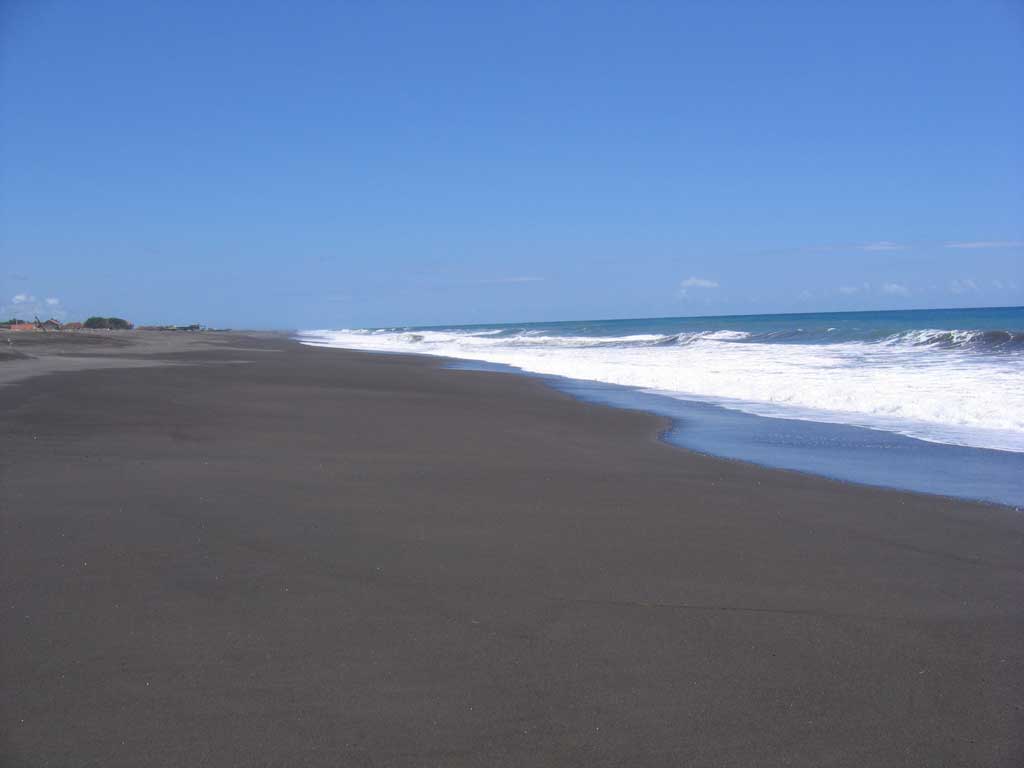

 |
|||
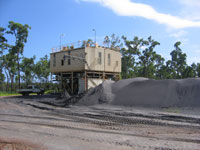 |
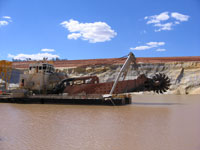 |
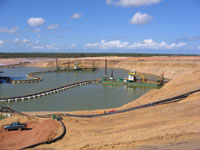 |
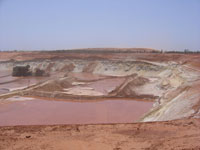 |
Mineral, silica and iron sands
Includes the following minerals which are of commercial value:
These minerals usually occur as beach sands in dunes or flatter deposits located on or close to present day coasts, although some occur inland on geologically historical coastlines. Because these minerals have been sorted, washed and weathered in marine conditions their grains are commonly liberated and rounded, although they may (particularly the older inland occurrences) be mixed or overlaid with clays and oversize rocks, and organically cemented (coffee rock).
There are also alluvial deposits, which are derived from weathered rock which have been transported by water but not concentrated in a marine environment. These deposits typically exhibit angular grains and greater size distribution and are often mixed with clays and oversize.
Ilmenite is also mined from large hard rock deposits, where the rock has to be crushed to liberate prior to separating the mineral, which is typically of low TiO2 content.
The chemical composition, physical properties and appearances of these minerals can be summarized in the following table:
mineral |
Chemical formula |
Specific gravity |
Magnetic response |
Electrostatic response |
appearance |
ilmenite |
TiO2.FeO (TiO2 50-59%) |
4.5 |
Para magnetic |
Conductor |
Vitreous black / dark grey opaque grains |
Secondary ilmenite |
TiO2.FeO (TiO2 60-67%) |
4.4 |
Para magnetic(weaker) |
conductor |
Vitreous black / dark grey opaque grains |
leucoxene |
TiO2.FeO (TiO2 68-89%) |
3.4-3.8 |
Para magnetic (weaker still) |
Conductor |
Dull brown amorphous grains |
rutile |
TiO2. (TiO2 96%) |
4.2 |
Non magnetic |
Conductor |
Vitreous reddish / translucent grains |
titanomagnetite |
TiO2.FeO (TiO2 7-8%) |
4.6 |
Para magnetic (stronger) |
Conductor |
Vitreous black / dark grey opaque grains |
magnetite |
Fe3O4 |
4.8 |
Ferro magnetic |
conductor |
Vitreous black opaque grains |
zircon |
ZrO2.SiO2 (ZrO2 67%) |
4.6 |
Non magnetic |
Non conductor |
Vitreous clear / white transparent grains |
garnet |
FeO.MgO.SiO2 (complex) |
3.2-3.6 |
Para magnetic (weaker) |
Non conductor |
Vitreous pink translucent grains |
Silica sand |
SiO2 |
2.7 |
Non magnetic |
Non conductor |
Vitreous white translucent grains |
Monazite |
(Ca,La,NdPr)PO4 |
4.6-5.7 |
Para magnetic |
Non conductor |
Green-yellow |
Chromite |
FeCr2O4 |
4.1-5.1 |
Non magnetic |
Conductor |
Brownish black |
The physical properties (specific gravity, magnetic and electrostatic response) listed above are used to concentrate and separate these minerals using gravity separation, magnetic separation and electrostatic separation respectively to a saleable product or as a feedstock for further processing.
The presence of clays, oversize and organics will increase the difficulty of separation, particularly when these contents are high, requiring additional processing to remove them.
Mineral sands mining can be carried out wet or dry, deciding factors as to which method is more suitable depends on the feed grade and tonnage being processed, the water table and the ground conditions. Wet mining is normally carried out by dredging (although sluicing can also be used) followed by floating wet plants, where grade is low and throughput high, although in NSW low tonnage operations have in the past used dredges in combination with land based wet plants. The water table has to be such that the dredge / wet plant can be floated, and preferably the sand being mined is reasonably free flowing. For high dune / free flowing sands (low slimes / organics / oversize) a rose cutter dredge can typically be used. Where the terrain is flat and slimes / organics and oversize are present and the sand less free flowing a bucket wheel dredge is normal. This type of dredge can handle more difficult conditions where benching is required, but may still have problems with excessive organics or oversize. Dredging is less precise than dry mining, and bottom losses will occur, although these can be minimized by sweeping back.
Dry mining is generally used for lower throughput higher grade deposits as it is more expensive or where ground conditions and water table considerations exclude dredging. It is more precise than dredging as the exposed ore is visible, so mining recovery is higher.
Following mining the ore is normally wet screened (trommel screens or vibrating screens) to reject +4mm, ahead of a surge bin, which is used to dewater and provide a steady feed to a subsequent gravity separation circuit. Depending on the slimes content cyclones may be used in conjunction with the surge bin overflow to reduce slimes to a level that minimizes their effect on the gravity stage.
Gravity separation is almost always carried out using spirals (having replaced Reichert cones some years ago) in a multistage circuit, typically consisting of rougher, scavenger, cleaner and recleaner stages, although additional stages such as finisher and mids scavenger may be used in some circumstances. Different spiral types are used (low grade, medium grade and high grade), as can high capacity spirals and wash water spirals.
The heavy mineral concentrate (HMC) thus produced is typically +90% HM at a recovery of 90% HM, although this can vary depending on the composition of the HM.
The HMC is stockpiled which also allows for dewatering, and then usually separated by dry magnetic and electrostatic separation. An exception to this is a wet high intensity magnetic separation (WHIMS) stage ahead of dry milling to remove ilmenite as a magnetic product. The selection of WHIMS is dependent on the TiO2 content of the ilmenite, which determines its magnetic susceptibility. If magnetite is present (even in small quantities) it must be removed before WHIMS or dry magnetic separation, otherwise it will cause problems. Magnetite removal is usually carried out by wet or dry low intensity magnetic separation.
Ahead of dry separation, thermal drying of the HMC is carried out using rotary dryers or fluid bed dryers, followed by dry screening. Depending on the mineralogical composition of the HMC magnetic separation or electrostatic separation follows next or later. Magnetic separation is commonly carried out using rare earth magnetic drums (RED) at the primary stage followed by rare earth magnetic rolls (RER) for subsequent cleaning circuits. These machines have generally replaced electro magnetic separators such as induced roll magnetic separators (IRM), cross belt magnetic separators and disc magnetic separators.
Electrostatic separation has been enhanced in recent years with the introduction of new generation high tension roll (HTR) separators which offer improved performance over the standard HTR. Conductor and non conductor cleaning of the HTR products is frequently carried out using electrostatic plate separators, which overcome the grain size influence on HTR separation. A derivative of the electrostatic plate known as the electrostatic screen plate separator is also sometimes used for zircon cleaning.
For zircon production the non magnetic non conductors normally require further gravity separation to remove quartz. This can be done using spirals and is often assisted by using a hydrosizer ahead of the spirals to size the feed into overflow and underflow fractions. If kyanite is present to any extent, in order to reduce the Al2O3 content to acceptable levels in the zircon product, a Kelsey jig will probably be required as spirals alone will be unable to make a satisfactory separation between the two minerals.
For rutile production, if pyrite is present, sulphide flotation is normally required to produce an acceptable product
Current major operating mineral, silica and iron sand mines are as follows:
Australasia
Iluka Resources, Iluka has mineral sands mines operating in Western Australia near Capel and Enneaba, in Victoria near Hamilton and South of Mildura, and in South Australia near Ceduna.
Cristal Mining, Cristal has mineral sands mines operating in Western Australia near Capel, in New South Wales between Broken Hill and Mildura.
Tronox, Tronox has a mineral sands mine operating in Western Australia north of Perth
CRL, Sibelco has a mineral sands mine operating in Queensland on North Stradbroke Island
Cape Flattery Silica Mine, CFSM has a silica sands mine operating in Queensland at Cape Flattery, north of Cooktown
Kemerton Silica Sands, KSS has a silica sands mine operating in Western Australia at Cape Kemerton, near Bunbury
NZ Steel Mining, NZ Steel has a iron sands mine operating in New Zealand at Taharoa on the North Island
Africa
Rio Tinto, RTIT has mineral sands mines operating in South Africa at Richards Bay and in Madagascar at Fort Dauphin
Tronox, Tronox has mineral sands mines operating in South Africa at Brand se Baai,Namakwaland and at Hillendale near Empangeni, KwaZulu
Kenmare Resources, Kenmare has a mineral sands mine operating in Mozambique at Moma, Nampula province
Sierra Rutile, SRL has a mineral sands mine operating in Sierra Leone at Lanti, South West province
Asia
Indian Rare Earths, IRE has a mineral sands mine operating at Chavara, Kerala, India
Kerala Minerals and Metals, KMML also has a mineral sands mine operating at Chavara, Kerala, India
Trimex Sands, Trimex has a mineral sands mine operating at Srikakulam, Andra Pradesh, India
VV Minerals, VVM has mineral sands mines in Tamil Nadu, India
Americas
Iluka Resources, iluka has mineral sands mines operating at Brink and Concord, Virginia, USA
Oregon Resources, Oregon has a chromite mineral sands mine operating in Southern Oregon, USA